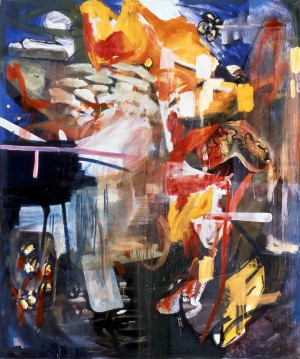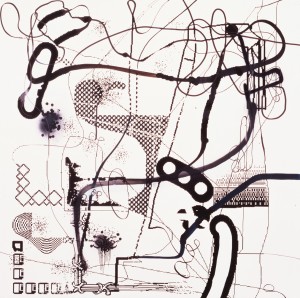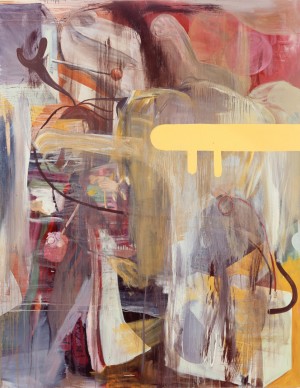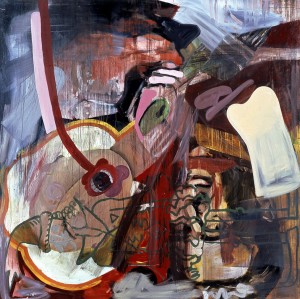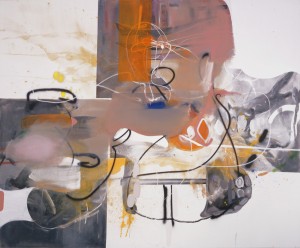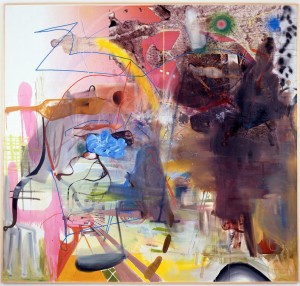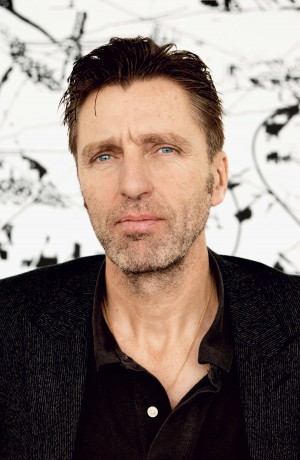
Albert Oehlen Portrait 2012.
Albert Oehlen
Artist Bio
Albert Oehlen exaggerates and distorts the traditions of abstract painting, breaking all the rules in order to discover how those customs work. The resulting paintings are so thoroughly and cleverly steeped in an aesthetic of excess and indulgence that the artist persuasively communicates a visual picture of breakdown. Often with self-consciously ugly color combinations and inscrutable, half-baked forms and decorative touches, Oehlen’s paintings have a seemingly deliberate resemblance to colorful wads of trash.
Oehlen explains his style in this way: “Because we now refuse to deny the direct dependence and responsibility of art vis-à-vis reality, and on the other hand see no chance for art as we know it to have an effect, there is only one possibility left: failure.” Oehlen finds himself in a trap, and rather than do nothing, he opts to paint his impressions of the trap itself. One such trap for painting is the mechanical reproduction of image, which, according to some theorists, drains images of their personal and social content. In this theoretical world, Kaleidoscope, 1994, makes no claim for fixed meaning and mixes painting with silkscreen. The marks on the canvas place outmoded dot matrix printing methods and gibberish computer characters together with an unmoored automatic drawing. The result is an intentionally confused field that pays homage to neither expressive nor mechanical processes.
Abstand, 2006, continues Oehlen’s iconoclastic motives, pitting techniques of painting advanced in the 1940s and 50s seemingly against one another. In the work, large tectonic areas of imagery and color are subverted by figurative and gestural elements noisily competing for compositional dominance. By using opposed frameworks, not only does Oehlen disrupt standards of taste but he also takes on the pretensions of the history of painting.
